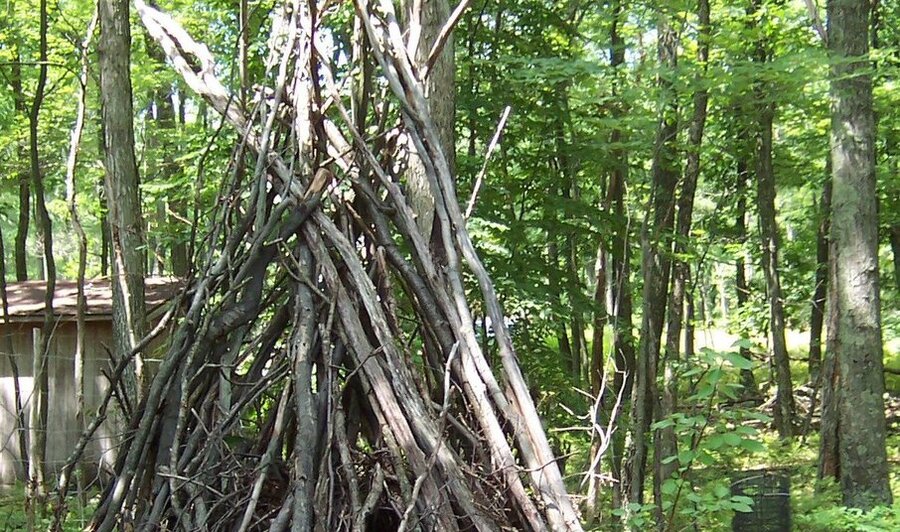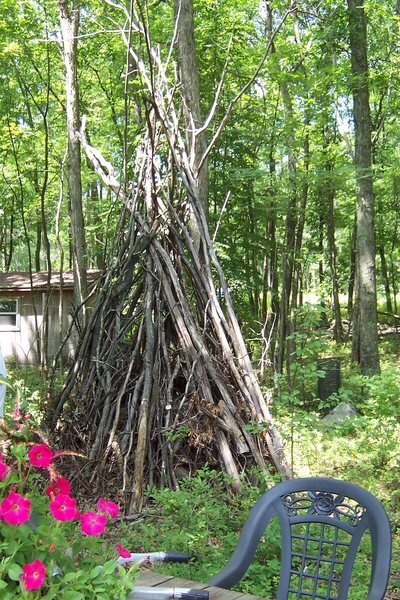Is it time to declutter your garden?
Loading...
One of the quickest ways to improve the appearance of any garden is to spend a weekend or two decluttering it.
Clutter doesn't have to be trash. It can also consist of items that are out of place, such as a bicycle lying on the lawn, a hose abandoned in a flower bed, or a motley collection of flower pots holding dead plants stacked on the porch.
Gardens are the places where we live in warm weather and, just as inside the house, every horizontal surface – chairs, tables, benches, stairs, decks, and the ground – becomes a magnet for everything that never quite made it back into the house, garage, or potting shed. These things have a way of becoming "invisible" the longer they remain in place.
Put them all away and you'll see an immediate improvement.
Most home stores and garden supply websites offer storage systems and mobile tool carts to help you stay organized. You may also want to try websites such as Freecycle to find a new home for items that are still useful, but no longer wanted.
As if our personal flotsam and jetsam weren't enough, the garden itself generates its own type of clutter. Dead limbs, branches, and sticks rain down throughout fall, winter, and early spring. Leaf mulch blows back out onto the lawn. And rocks or boulders may litter the ground in the most inconvenient places, tripping us up.
Repurpose yard 'debris'
Think through where this debris might do some good before you pick it all up and haul it to the curb. Can the branches become a bird and small mammal habitat? A framework for peas, runner beans, or flowering vines? Are the rocks large enough to start a rubble wall, or small enough to fill a French drain? Can it all be used to build a berm or fill in a hole?
In the sense that our gardens are controlled environments, they are unnatural. For example, a healthy woodland will have hundreds of skinny saplings that will never mature due to a closed leaf canopy, leaning trees damaged in windstorms, and rotting logs covered by moss and inhabited by insects, salamanders, and lizards. A thick layer of leaves, needles, or fungi may cover the forest floor. Its overall appearance would be considered unsightly in a garden.
A woodland garden on the other hand is a more parklike setting that lets in enough light to sustain Dutch bulbs, flowering plants and shrubs, areas of grass or other ground cover, and non-native flowering and fruiting understory trees. It may have a clearing that will support roses, veggies, or other sun-loving plants.
But it will still need a periodic clean-up to keep it tidy.
Plants may need decluttering, too
Invasive, poisonous, or otherwise obnoxious plants qualify as clutter, as do ornamental plants when too many different kinds are planted without any unifying theme or factor.
For example, a collection of many different kinds of plants, can be unified by color to create a blue garden, an orange garden, a yellow garden, etc. Alternatively, varieties of the same plant, such as lavender or hosta, can be massed together in one place and be visually held together by their leaf type.
While it will probably make garden decluttering expand to fill the time available, activities that involve moving leaves, branches, logs, and stones provide an opportunity for quality time while getting some basic chores done. Get a copy of a regional field guide, such as those put out by The Audubon Society, also available as mobile apps, and involve the whole family in an ad hoc science project.
-----
Lois J. de Vries, a popular speaker at regional flower shows and garden clubs, writes from her home in rural northwestern New Jersey. She's a field editor for Better Homes and Gardens and Country Gardens magazines and has been a contributing editor for other national publications. She was awarded the Jefferson Presidential Award for public service in environmental work and appointed to the Garden Writers of America Sustainability Task Force. Click here and here to read more about her garden design and environmental ideas and her holistic approach to gardening.You can also follow her on Twitter and Facebook






